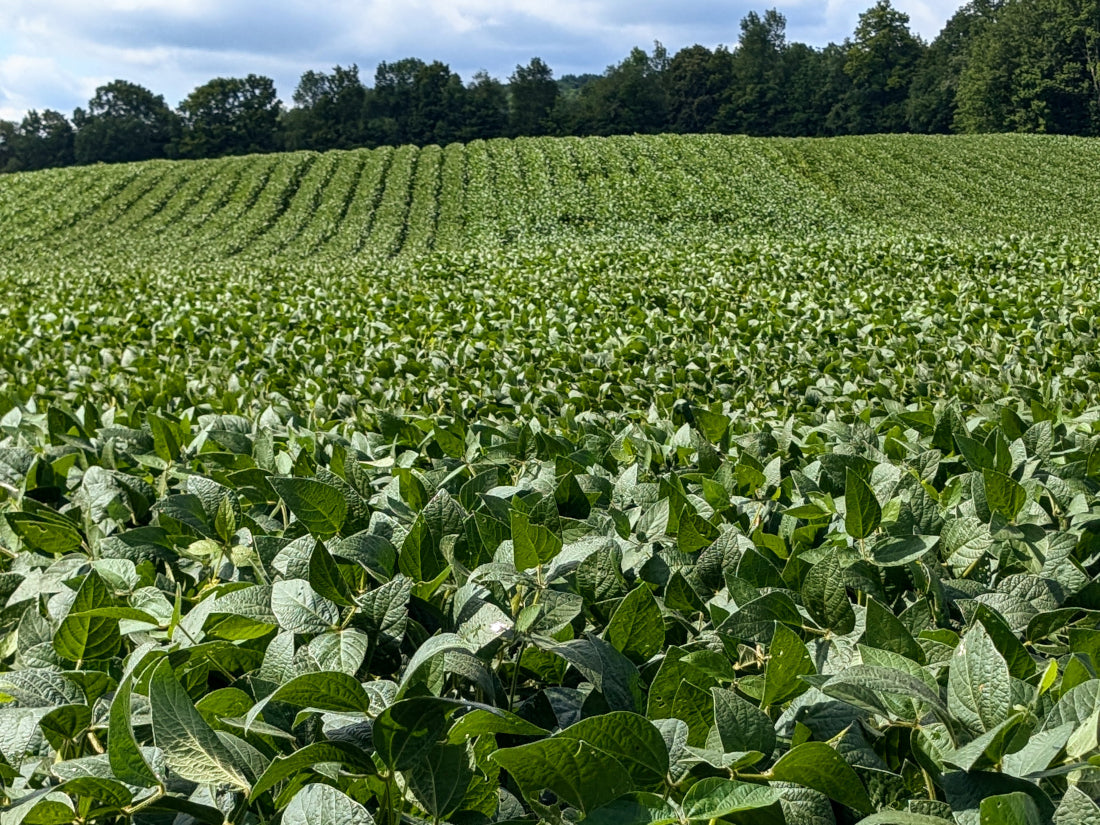I love the immediacy of farming. Unlike, say, developing an SaaS business that provides a suite of analytics tools designed to help identify and forecast trends in mid cap stocks, farming can be straightforward: raise food so people can eat. We all need something for dinner, and farms like mine provide it. Unfortunately, this does not describe farming as a whole.
As agriculture industrialized synthetic fertilizer increased the quantity of calories produced on each acre and tractors increased the quantity of calories produced by each hour of human work. Efficiency led to consolidation into larger and larger farms. Food production now concentrates in the areas most suited to big ag, not in areas where people actually eat. So the midwest is covered with corn and soy, Iowa has factory pig farms, California has 100000 cow dairies, and Oklahoma has giant feedlots, all of which are plugged into a global food system. Most food has traveled hundreds or thousands of miles before making it into someone’s kitchen.
But the efficiency of production has allowed for a peculiar inefficiency at the next level. No one is eating corn or soybeans straight from the field. Instead, these commodity crops are fed to animals or broken down into more refined products — corn starch, soy protein, and so on — which are then reassembled into novel food and sold at radically higher prices.
Take Doritos. Right now Walmart will sell you them for $6.55 per pound if you spring for the Party Size bag. But if you flip it over and look at the label you will see that the first item of the long ingredient list is corn, which has a commodity price of $0.07 per pound. Sure, there are also flavorings, oil, and other more expensive ingredients, but the majority of the cost is the processing and packaging, and the majority of the profit goes to the companies that turn corn into neon orange tortilla chips, not to the farmer who grows the corn. Other than a few exceptions like meat, vegetables, milk, and eggs, the cost of groceries reflects the cost of processing rather than the cost of food.
One reason for the shift towards fast food and prepackaged meals is obvious. Whether or not we actually have less time than we used to most of us feel that our lives are busier than ever, so any alternative to cooking from scratch is attractive. But another reason is the very fact of how cheap raw calories have become. Things like cornmeal, flour, sugar, and oil cost so little that they can be endlessly reformulated and then sold at a huge markup, while still costing the customer less on a per calorie basis than whole foods like meat, to say nothing of vegetables.
Ultra-processed food has a such a prominent place in the grocery store in large part because we have so relentlessly pursued efficient calorie production to the preclusion of basically everything else. Corn is the cheapest way to produce carbohydrate, and soy is the cheapest way to produce fat and protein, so we we grow millions of acres of each. The original reason for the rush to increase agricultural productivity — a growing global population and an urgent need to stave off the prospect of famine — is far behind us, yet we keep operating as if nothing could be more important than squeezing another few bushels out of each acre of Iowa field. The result is a glut of cheap, processed foods.
It hardly needs to be said that there’s no silver bullet. The food environment in which we find ourselves has resulted from a combination of the changing farming practices I’ve just sketched, but also from advertising, the erosion of food traditions, and the ubiquity of packaged foods. But I do think it’s a strong argument that more local food can be part of the solution. By its nature ultra-processed food cannot be a local product, so trying to eat more locally will necessarily result in eating more whole foods.


1 comment
It is very interesting that you would choose this subject now. Here in Maine (I’m not sure about the rest of the US) we have two grocery chains that I have come to rely on over the past twenty years. This week I asked about the items I had previously found available that are not on the shelves (nor are the tags for them to reappear). At the first, larger chain I was told it is a top down directive and the items (organic frozen brussels sprouts and organicchocolate bars from here in Maine) will not be coming back. At the second, smaller chain, my request and phone number were taken down and I was told that the availability would be checked and that orders are done every two weeks. I think there is a change currently underway to make grocery store corporate owners much richer much quicker, right now. I am (and have been since food sovereignty has come into the news this year) been closing charge accounts and moving to cash, and buying locally. Here this year we have farmers’ markets reappearing, local producers gathering to give info and get requests. I am growing brussels sprouts again this year with the help of aged 3 yr manure from a local grassfed dairy. The chocolate will become a special treat as it used to be when I was a kid- from the candy store down state on vacation. I prefer to look at this as cyclical necessity for me and I plan to be supportive as others in community figure it out. Thanks for doing what I can’t- producing meat, milk and eggs (for now-hens may be coming). Blessings